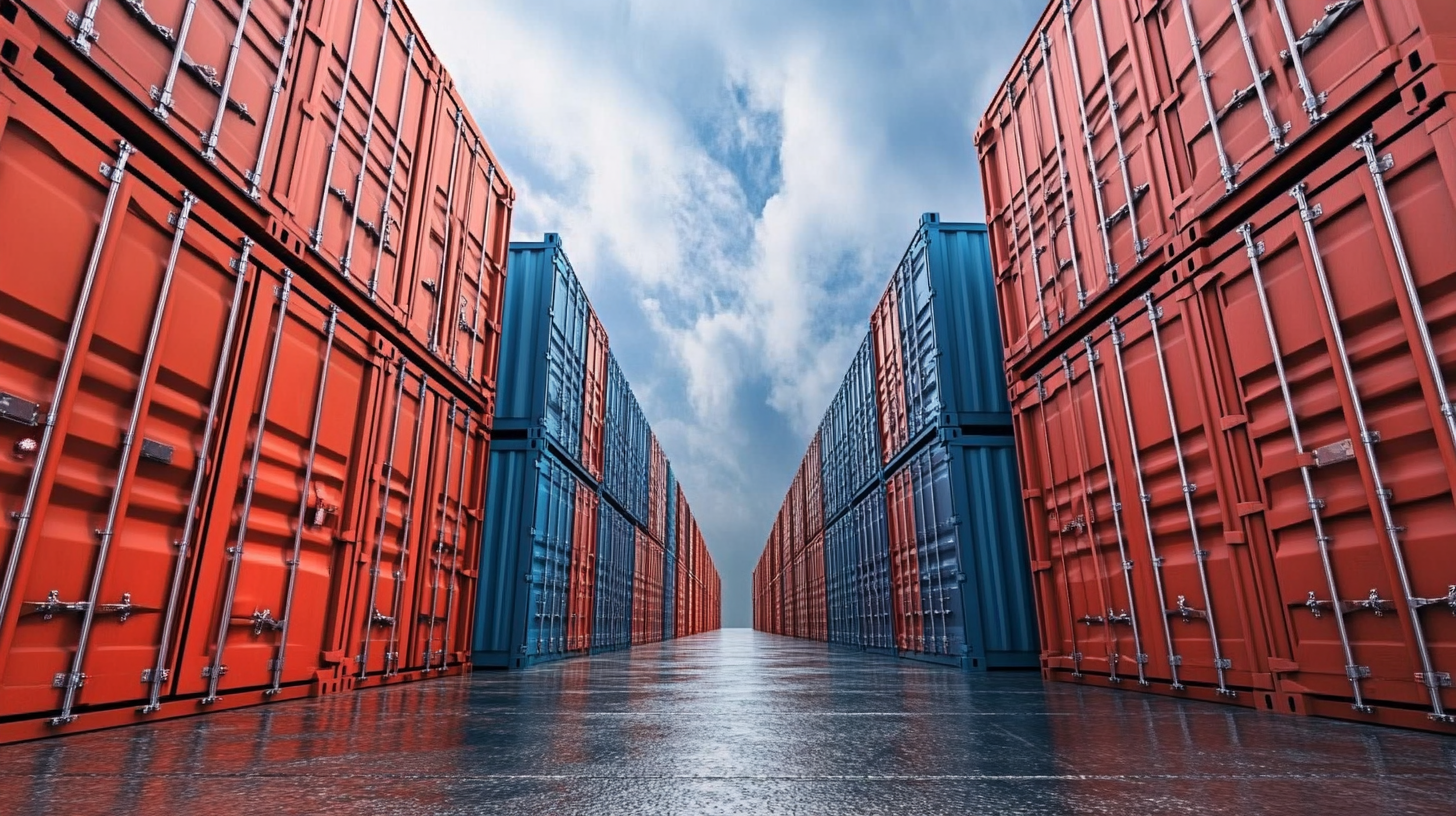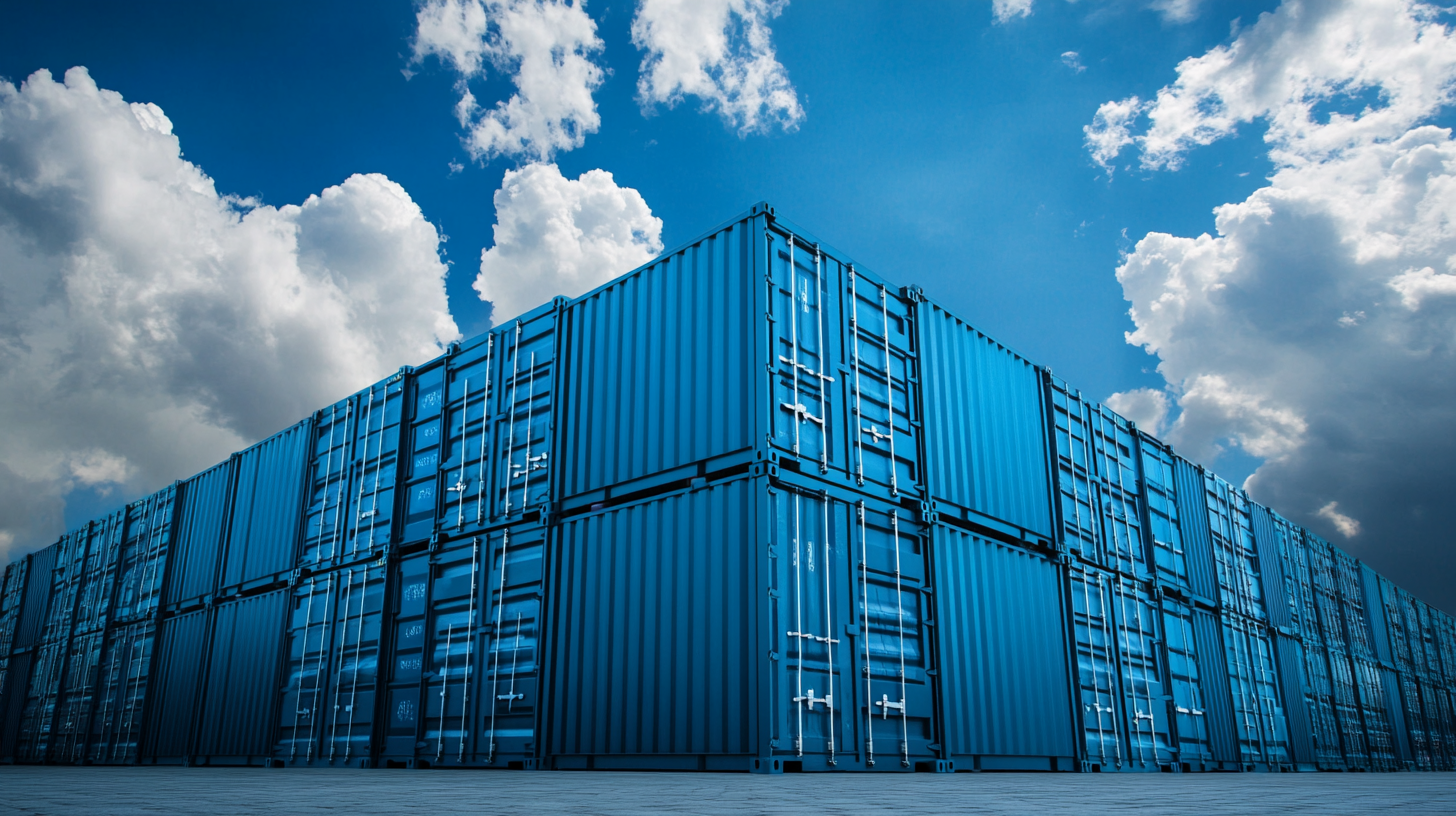In today's fast-paced business environment, choosing the right storage solutions is crucial for efficiency and growth. As we look ahead to the 2025 industry trends, the demand for innovative and sustainable storage container solutions is greater than ever. Businesses must navigate the complexities of selecting optimal Storage Container Storage Units that align with their unique needs while also adapting to technological advances and changing market dynamics. This ultimate guide will explore the top strategies for leveraging storage container solutions, ensuring that your business remains agile and prepared for future challenges. From understanding the latest trends to selecting the most suitable type of storage units, this resource will provide essential insights to help you make informed decisions and enhance your operational capabilities.

When selecting the right storage container solutions for your business, it's crucial to understand your unique requirements. Factors like the type of goods being stored, the volume of inventory, and the duration of storage can significantly influence your decision. For example, a recent report indicated that the demand for specialized storage containers has surged by 15% in the last two years, primarily driven by the e-commerce boom and the need for efficient logistics. This trend highlights the importance of choosing containers that not only fit your products but also enhance accessibility and efficiency.
Moreover, considerations like durability, cost-effectiveness, and scalability are essential. A study showed that businesses using high-quality modular storage containers experienced a 20% increase in operational efficiency. These containers can adapt to varying storage demands, making them ideal for businesses anticipating growth or seasonal fluctuations. As you evaluate your options, align your choice with industry standards and practices to ensure that the storage solution you choose supports your business's specific operational goals.
The rise of sustainable storage solutions is a pivotal trend in today’s global supply chains. As businesses seek to minimize their environmental impact, there is a marked shift towards eco-friendly storage options. Companies are increasingly investing in solutions that not only reduce waste but also improve efficiency. This trend is gaining momentum, with many sectors such as logistics and retail prioritizing sustainable practices in their operations.

Market analysis indicates that the growing demand for sustainable storage solutions is driven largely by changing consumer preferences and regulatory pressures. Organizations are now recognizing that investing in green technologies not only contributes to a healthier planet but also enhances their brand reputation and customer loyalty.
In particular, innovations in materials and designs are expanding options for businesses looking for effective yet sustainable storage solutions. As the industry adapts to these trends, companies that embrace sustainability will likely maintain a competitive edge in the evolving marketplace.
When it comes to selecting storage containers for your manufacturing needs, the choice between metal and plastic can significantly impact efficiency and productivity. Metal containers offer robust durability and are ideal for heavy-duty applications. They can withstand harsh environments and have a longer lifespan, making them a worthy investment for businesses that prioritize longevity.
On the other hand, plastic containers are lighter and often more cost-effective. They are resistant to corrosion and can be easily customized for different storage solutions. Additionally, plastic containers are often stackable, which can help optimize space and reduce clutter in your workspace.
**Tips: When evaluating metal versus plastic, consider the specific requirements of your operations. For heavy items or hazardous materials, metal might be a better choice. Conversely, if weight and flexibility are critical, opt for plastic. Always ensure that the containers meet safety standards and are suitable for the materials you plan to store to enhance efficiency in your production line.**
| Criteria | Metal Containers | Plastic Containers |
|---|---|---|
| Durability | High - Resistant to wear and tear | Moderate - Can crack under stress |
| Weight | Heavy - Requires more effort to handle | Light - Easier to transport |
| Cost | Higher initial investment | Lower initial investment |
| Maintenance | Requires rust prevention | Easier to clean and maintain |
| Temperature Resistance | Good for high temperatures | Limited - Can warp with heat |
| Chemical Resistance | Varying - Some metals corrode | Good - Generally resistant to chemicals |
| Customization Options | Limited - Difficult to modify | High - Easily customizable |
When considering storage container solutions for your business, a comprehensive cost-benefit analysis is essential. According to a report by the North American Storage Association, businesses can save up to 30% in operational costs by utilizing high-quality storage containers that optimize space management and improve inventory accuracy. Investing in durable and versatile storage options not only reduces the need for frequent replacements but also minimizes downtime during inventory management processes.
As businesses continue to evolve, prioritizing quality storage solutions becomes crucial for long-term success and sustainability.
 When choosing storage container solutions for your business, compliance and safety standards are paramount. According to a report by the National Safety Council, workplace injuries cost U.S. businesses over $170 billion annually. Implementing safe storage practices not only protects your employees but also minimizes the risk of costly fines due to non-compliance with industry regulations such as OSHA and HAZMAT. Ensuring that your storage containers adhere to these standards can significantly reduce liability and enhance safety protocols in the workplace.
When choosing storage container solutions for your business, compliance and safety standards are paramount. According to a report by the National Safety Council, workplace injuries cost U.S. businesses over $170 billion annually. Implementing safe storage practices not only protects your employees but also minimizes the risk of costly fines due to non-compliance with industry regulations such as OSHA and HAZMAT. Ensuring that your storage containers adhere to these standards can significantly reduce liability and enhance safety protocols in the workplace.
Moreover, a study conducted by the American Society of Safety Professionals indicates that companies with robust safety compliance programs experience 50% fewer accidents. This correlation highlights the importance of selecting storage solutions designed for safety and regulatory adherence. Consider opting for containers with features like proper labeling, durable materials, and designs that prevent accidents and chemical spills. Investing in compliant storage solutions is not merely a legal obligation but a strategic decision that fosters a safer working environment while maintaining operational efficiency.